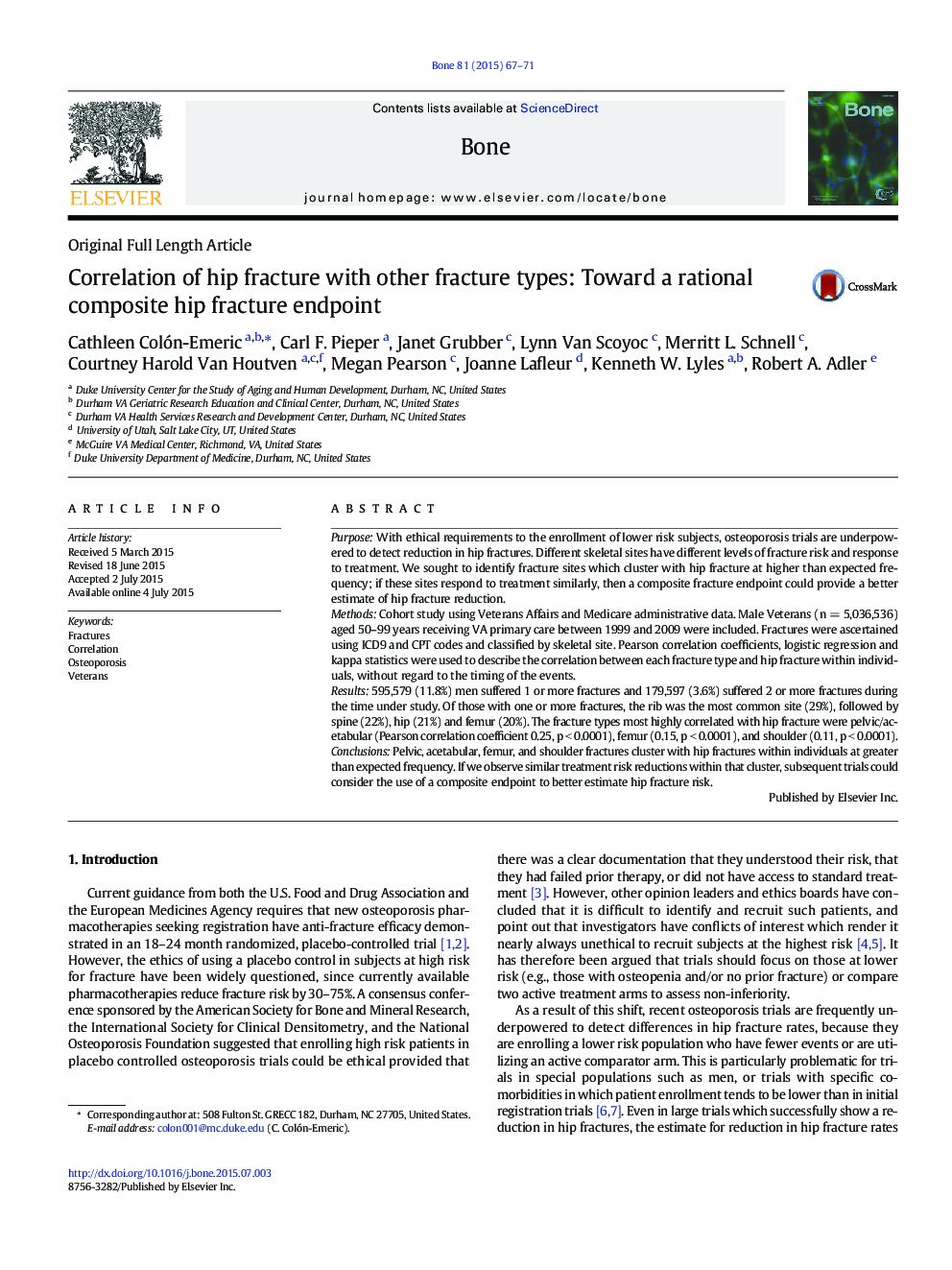| کد مقاله | کد نشریه | سال انتشار | مقاله انگلیسی | نسخه تمام متن |
|---|---|---|---|---|
| 5889230 | 1568138 | 2015 | 5 صفحه PDF | دانلود رایگان |
• A composite hip-type fracture outcome would reduce study sample size requirements.
• Certain fracture types correlate with hip fracture nearly twice as much as others.
• Hip, pelvic, femur, and humerus fractures may be a rational combined endpoint.
PurposeWith ethical requirements to the enrollment of lower risk subjects, osteoporosis trials are underpowered to detect reduction in hip fractures. Different skeletal sites have different levels of fracture risk and response to treatment. We sought to identify fracture sites which cluster with hip fracture at higher than expected frequency; if these sites respond to treatment similarly, then a composite fracture endpoint could provide a better estimate of hip fracture reduction.MethodsCohort study using Veterans Affairs and Medicare administrative data. Male Veterans (n = 5,036,536) aged 50–99 years receiving VA primary care between 1999 and 2009 were included. Fractures were ascertained using ICD9 and CPT codes and classified by skeletal site. Pearson correlation coefficients, logistic regression and kappa statistics were used to describe the correlation between each fracture type and hip fracture within individuals, without regard to the timing of the events.Results595,579 (11.8%) men suffered 1 or more fractures and 179,597 (3.6%) suffered 2 or more fractures during the time under study. Of those with one or more fractures, the rib was the most common site (29%), followed by spine (22%), hip (21%) and femur (20%). The fracture types most highly correlated with hip fracture were pelvic/acetabular (Pearson correlation coefficient 0.25, p < 0.0001), femur (0.15, p < 0.0001), and shoulder (0.11, p < 0.0001).ConclusionsPelvic, acetabular, femur, and shoulder fractures cluster with hip fractures within individuals at greater than expected frequency. If we observe similar treatment risk reductions within that cluster, subsequent trials could consider the use of a composite endpoint to better estimate hip fracture risk.
Journal: Bone - Volume 81, December 2015, Pages 67–71
